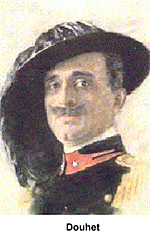 The recent “Shock and Awe” air campaign in Iraq is held up as proof of Douhet’s validity. Reading Command of the Air will dispel this fantasy. No air campaign has met the criteria set down by Giulio Douhet in his 1921 book.
The recent “Shock and Awe” air campaign in Iraq is held up as proof of Douhet’s validity. Reading Command of the Air will dispel this fantasy. No air campaign has met the criteria set down by Giulio Douhet in his 1921 book.
What Was Douhet’s Strategy?
Giulio Douhet sought rapid victory—within ten days of beginning his air campaign. His target: the will of the enemy nation. Douhet reasoned that a nation could only make war if the national will permitted it. The World War (Douhet’s words) brought unprecedented destruction on the battlefield and suffering to entire nations. On the other hand, once out of artillery range, the civilian populations of the warring nations did not directly feel war’s effects. Douhet reasoned that the soft civilian's morale would crumble when their safety was removed. He was going to remove that safety with large masses of “battle planes” carrying poison gas, incendiary, and high explosive bombs in the ratio of 60:30:10 by bomb weight. Douhet’s immediate objective was, in a single attack, reducing population centers to smoking, poisoned rubble.
Key to his strategy were masses of unstoppable “battle planes,” multi-engine monster aircraft armored so that no fighter aircraft could harm them, and armed with cannon and machine guns so that attacking fighter aviation would be destroyed by converging fire from multiple battle planes.
As for anti-aircraft defense, Douhet preached that the Italian people would just have to suck up any enemy air attacks and have faith that the French or German people would crack first. To ensure that Italy prevailed, Douhet preached against “wasting” Italy’s slender resources on defensive fighter aviation, anti-aircraft artillery, barrage balloons, searchlights, and other air raid protection measures. All available resources were to be placed in the effort to control the enemy skies, save the minimum land and naval forces needed to prevent the enemy from overrunning Italy while the air campaign destroyed the enemy’s cities and civilian morale.
Douhet’s words will gladden the cold heart of Strategic Defense Initiative opponents and Mutually Assured Destruction supporters both: he stated that Italy must resign herself to endure enemy offensives in order that all means could be used to inflict greater damage to the enemy. Moral preparation and the rapidity of Douhet’s victorious air campaign were the shield against enemy air attack. The decisive factor, the one Douhet counted on in his asymmetrical warfare doctrine, was that no enemy nation had the icy self-discipline to refrain from frittering away scant resources on air defenses, fatally compromising their air offensive.
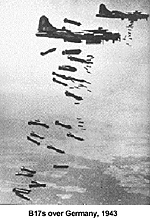 I Object!
I Object!
However I must point out that Douhet’s strategy had fatal flaws.
First, military men and civilians hold one another in contempt, attributing each other with every personality flaw in existence. Basically, there’s “our gang” and “them”—and “them” has every weakness known to man, are constantly inventing new ones, and can be relied upon to be the worst examples of subhuman behavior.
Second, Douhet’s tribal claim that Italians could be indoctrinated to suffer air attack implied that other nationalities couldn't also be indoctrinated, then lied to as long as necessary to produce victory.
Third, the role of “civilian morale” in war making is overrated. There is some basis for this fantasy: Italy almost quit the World War, as did France several times. Russia did quit. Germany and the Austro-Hungarian Empire finally collapsed. In all five cases, the collapse was due to their militaries, not civilian agitation. Paris nearly fell early in the Great War, and the French army mutinied in 1917. Italy narrowly averted defeat by German forces because the latter were just as exhausted and couldn't sustain a breakthrough. The Russian Revolution, just like the French Revolution of 1789, toppled the Imperial monarch only when the military forces stood behind the rebels. And it was the collapse of Germany’s military, not the fabled “stab in the back” by at-home civilians, that forced the Kaiser’s abdication.
Fact: every government pays lip service to “the will of the people,” but those in government hold the masses in contempt. The reason governments pretend to care about their subjects is so that the little people, those unwashed masses of sheep, won’t decide that their government is irrelevant and ignore government edicts wholesale. This simple fraud explains why guerrilla warfare and terrorism works—not because it frightens the masses, but because showing the limits of government control may encourage more anti-governmental activity.
Douhet may have preached that the powerless masses would force their government to surrender not because of fact, but as a deterrent to other governments. Was Giulio Douhet really so arrogant that he believed powerless peasants who had failed to prevent a war could, after being gassed and burned and blasted, their cities reduced to rubble, rise up and force their government to surrender? Given that only a fraction of these starving, injured and sick civilians would be able to reach the intact enemy seat of government along the destroyed road and rail webs because the communication centers (cities) were wiped out, could these very people Douhet held in contempt have possibly prevailed against the intact organs of state control, those esteemed soldiers and military leaders? Unless Douhet had ingested too many recreational chemicals, I think the real target of Douhet’s propaganda was the enemy government officials. By raising the specter of revolt, Douhet hoped to avoid war.
I confess to speaking from an early 21st Century perspective—but no air offensive during the 20th Century met Douhet’s criteria. The closest approximation was McNamara’s M.A.D. strategy—and that may have just been for public consumption. Unclassified portions of “Operation Drop Shot,” the 1950’s blueprint for American atomic war against the Soviet Union, diverged from Douhet’s strategy on several important counts. The atomic bombing campaign was supposed to last months—not days. “Drop Shot” did benefit from the experience of World War Two’s air campaigns. Civilian morale was not a big factor in the American Air Force war plans. After all, if the Soviet people were not able to keep their government from going to war, why concentrate on civilian morale when there were targets of higher priority?
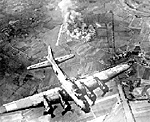 Specifics of Douhet’s Doctrine
Specifics of Douhet’s Doctrine
My own prejudices aside, Douhet had specific recommendations on using 1920’s hardware and the anticipated 1930’s improved hardware to implement his strategy. As I already mentioned, Douhet preached an all-out, full-bore assault upon what he considered “civilian targets.” Douhet expected to win the war within days because there was no foreseeable counter to fleets of his invincible battle planes. Warning: the specifics have been overtaken by technological improvement. Remember that hardware is only a part of technology—what’s the difference between a rock and a wrench if both are only used as a hammer? Technology is the practical application of knowledge.
“In general, aerial offensives will be directed against such targets as peacetime industrial and commercial establishments; important buildings, public and private; transportation arteries and centers; and certain designated centers of civilian population as well. To destroy these targets three kinds of bombs are needed—explosive, incendiary, and poison gas—apportioned as the situation may require.
The explosives will demolish the target, the incendiaries will set fire to it, and the poison-gas bombs prevent fire fighters from extinguishing the fires.”
A Douhet bombing unit was intended to completely destroy an area 500 meters in diameter in one attack. Air bombardment was considerably less accurate than artillery fire, and aircraft bombs of Douhet’s era were suitable for targets of artillery fire because those military positions were designed to withstand heavy bombardment—Douhet insisted that air targets would be large and unprotected.
“The complete destruction of the objective has moral and material effects, the repercussions of which may be tremendous. To give us some idea of the extent of these repercussions, we need only envision what would go on among the civilian population of congested cities once the enemy announced that he would bomb such centers relentlessly, making no distinction between military and non-military objectives.”
Fifteen years after Douhet died, the United States Army Air Force dropped leaflets on many Japanese cities warning of their impending annihilation by a new type of weapon. Japan had been lashed by bomber attack since the rather ineffective Doolittle Raid of 1942—at first, with marginal material effect, but by 1945 the effects of fire bombing were devastating. In spite of this, Hiroshima didn’t evacuate due to a few leaflets. The Mark I “Little Boy” uranium bomb leveled Hiroshima with a 12 kiloton blast. Three days later, Nagasaki was blasted by an even bigger Mark III “Fat Man” plutonium bomb—but its 22 kilotons caused about a quarter the fatalities of the smaller Hiroshima bomb. Both bombs were air bursts, primarily to maximize blast effects, but having the side effect of reducing radioactive fallout and residual radiation.
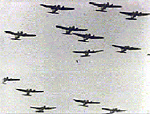 Rain Hell From The Sky
Rain Hell From The Sky
Douhet didn’t know about atomic bombs, but his words on poison gas should suffice to speculate how he would have employed them. “Gas attacks must be so planned as to leave the target permeated with gas which will last over a period of time, whole days, indeed, a result which can be attained either by the quality of the gases used or by using bombs with varying delayed-action fuses.”
At the time Douhet preached his “the bombers will get through” doctrine, air defense was crude. There was no centralized air defense center. Douhet was pioneering the concept of putting all aviation assets under one commander, and concentrating their use rather than frittering away aircraft one or two at a time. Fighter aviation of the 1920’s were lightly armed with one or two rifle-caliber machine guns. Late Great War fighter aircraft sometimes had four machine guns, or even light cannon.
By the 1930’s the standard rifle-caliber aircraft machine gun fired twice as fast as the closely-comparable infantry water-cooled heavy machine gun, but in 1920 the aircraft machine guns were firing around 600 rounds per minute—not a lot of metal on target, and armor-piercing projectiles were not common. It was realistic to believe big aircraft with vital components armored would survive being pecked at by enemy fighter aircraft while knocking the latter from the skies with the same or bigger armament. Douhet postulated 6000 horsepower battle planes armed with 2 cannon of 37mm, 2 cannon of 20mm, and three 12mm machine guns. This battle plane had a ceiling of 5000 meters and could take two tons of bombs on an 8-hour mission, or 4.6 tons on a shorter 6-hour mission. By swapping out fuel, armor, and bomb load, this battle plane could fly up to 15 hours, or lug 8 tons of bombs. Douhet thought big—he equipped the German forces in his “The War of 19—“ with 100 of these 6000-hp battle planes, 600 earlier models of 3000-hp, and 800 “obsolete” 2000-hp battle planes. Nearly all of these took part in the first day’s fighting, foreshadowing the bomber offensives by Britain and the United States against Germany in late 1943 to the end of the European conflict.
Curiously, Germany at the time was prohibited aircraft of any sort and the German Army was restricted to the Reichswehr, which was more or less a constabulary force.
Fighter detection during Douhet’s day was restricted to visual from air and ground observers and sound detectors on the ground. Back in the 1880’s mad Nicola Tesla theorized radio detection of ships and balloons, but it isn’t technology until it is practical. Radio communications were unreliable—Armstrong’s FM radio was an American secret weapon, reliable air-to-air voice communications regardless of atmospheric conditions. Air navigation was hit or miss—barely adequate for finding fixed points such as cities, and difficult for locating individual moving ships and ship convoys at speeds of around 25 kilometers per hour.
Douhet’s battle plane fleet would reach speeds 20 times faster, around 500 kilometers per hour. Had Italy fully developed Douhet’s Independent Air Force, it isn’t unreasonable to consider it unstoppable by any 1930’s air defense establishment. The most important defensive fighter aircraft development is a system of centralized information management and aircraft direction. Douhet stressed that surprise was as important in the air as in any form of war. At the time, radio listening posts and ground observers would have been a valuable means of aircraft detection, but defensive fighter direction from a centralized information and control would prove more valuable than radar. Once detected, the battle plane fleet had to be met with enough fire power to damage enough battle planes and make the bombing mission ineffective.
The typical fighter mission of the period was to patrol a sector in groups of three to nine looking for the enemy. Fighters had to stay within visual range of each other so that hand signals could be exchanged. Fighter planes had around 90 minutes endurance, and turnaround time between flights was about the same—to maintain an air screen of nine planes during daylight hours would take about 50, with a patrol radius of around 100 kilometers. A battle plane fleet would cover 100 kilometers in 12 minutes. Douhet counted on the logistics of the air defense situation to keep large numbers of enemy fighter aviation from knocking his battle plane fleets from the air. Douhet didn’t believe in night bombers—after all, daylight bombing was more effective, and defending aviation wouldn’t be effective.
Even though Douhet said that his air force was to be independent, he really preached that his air force was to predominate. He chose targets “which have no way of retaliating or putting up any self-defense at all, and which may be located anywhere on the surface of sea or land.” (italics in the original) Douhet wrote “To have command of the air means to be in a position to prevent the enemy from flying while retaining the ability to fly oneself.” Douhet’s air force would “bomb the interior of the enemy’s country so devastatingly that the physical and moral resistance of the people would also collapse.” Secondary targets were cutting off an opponent’s army and navy from their bases of operations. Armies of the period were prepared to exists up to a month without re-supply, and navies generally had similar endurance. Douhet didn’t ignore logistical support for his air force. Air fields were motorized—the repair shops, fuel and munitions, and other support was to be mounted on motor vehicles and mobile.
His 6000 horse power battle plane was to be a sea plane because the typical dirt-surfaced airfield of the day wasn’t up to 40 or 50 tons of aircraft landing and taking off. Douhet’s air force existed for one purpose: bombing large civilian centers. Anything that took away from this, including aviation assets devoted to defense of air fields, was “wasteful.” After the anticipated enemy collapse, Douhet expected that a handful of soldiers would be adequate for occupation duties, were Italy to decide to take over the ruined enemy nation.
“Awe!”
There still has been no real test of Douhet’s theory. No one during in World War II or since has waged a sudden air campaign directed against civilian targets in an effort to collapse enemy resistance. The Battle of Britain, the Blitz, started as Goering’s attempt to destroy the Royal Air Force, and meandered through multiple priority shifts before becoming little more than city-busting. Britain’s Fighter Command was centralized and managed to stave off defeat—but it can be argued that Adolf Hitler was Britain’s greatest asset in winning the Battle of Britain.
Britain’s long air bombardment campaign started out strictly targeted against military personnel and material. More than any other nation, Britain preached Douhet—she had two bomber aircraft for every fighter in her inventory. Even though the Royal Navy was the premier service, the Royal Air Force took control of all aircraft after the end of the World War, That resulted in Britain having second-rate carrier aviation through World War Two, limiting Britain’s effectiveness in the U-boat war, the European conflict, and really hurting Britain in the Pacific. Britain switched from daylight bombing to massed night bombing because German fighter defenses and flak (shorthand for Flugzeug Abwehr Kanone, or anti-aircraft artillery) took too heavy a toll on British “self-protecting” bombers. Fighter escort was not possible due to the range, so even though it was possible to fly around flak concentrations, the mantle of darkness was the best armor for British bombers.
The Luftwaffe had switched to night operations as well due to British ack-ack (“ack” was the British phonetic for the letter “A” and AA was “anti-aircraft artillery”) and Fighter Command, lack of suitable escort fighters, and general unsuitability of German aviation for the long-range bombardment role. Japan practiced long-range bombardment with aircraft that had long legs, high speed, and substantial bomb loads against negligible Chinese defensive aviation—which is why Claire Chennault and his mostly-American aviation mercenaries were such a big deal in China. Japan failed to win in China because China had few suitable bombing targets and because Japan had insufficient occupation assets, another flaw in the Douhet strategy.
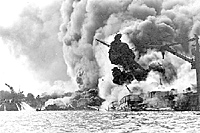 Once the war is won, adequate force is needed to win the peace. When America joined the war, it was due to embarrassing Japanese aviation victories in the Philippines, but especially at Pearl Harbor. Japan attacked only military targets on Oahu —it can be argued that only tactical targets were destroyed. Yamamoto wanted to invade and conquer Hawaii, but was overruled and limited to devastating Oahu. The admiral on the spot decided that conservation of force was in order and Vice Admiral Chuichi Nagumo canceled the third wave, intended for strategic targets like shipyards and the oil tank farm. Nagumo is famous for losing his fleet at Midway half a year later because he dithered about bombs and torpedoes and additional strikes on Midway Island while looking for American flattops.
Once the war is won, adequate force is needed to win the peace. When America joined the war, it was due to embarrassing Japanese aviation victories in the Philippines, but especially at Pearl Harbor. Japan attacked only military targets on Oahu —it can be argued that only tactical targets were destroyed. Yamamoto wanted to invade and conquer Hawaii, but was overruled and limited to devastating Oahu. The admiral on the spot decided that conservation of force was in order and Vice Admiral Chuichi Nagumo canceled the third wave, intended for strategic targets like shipyards and the oil tank farm. Nagumo is famous for losing his fleet at Midway half a year later because he dithered about bombs and torpedoes and additional strikes on Midway Island while looking for American flattops.
America was not always “in the groove” about decisive aviation actions either. MacArthur grounded his B-17 fleet, despite knowing that the Japanese had already hit Pearl Harbor. The result—Japan destroyed MacArthur’s air force later that same day, American B-17’s tried daylight bombing operations over Germany without fighter escort—but soon learned it was a mistake. The air war in the Pacific yielded few key strategic targets aside from Japanese cities—as well as permitting unescorted bomber aircraft to freely range across Pacific skies, hampered more by weather, mechanical deficiencies, and poor navigation that by enemy fighters and anti-aircraft artillery.
The latter were dangerous, but due to lots and lots and lots of sky, fighter aviation and air defense guns were thinly spread and only concentrated at things the Allies and Japanese didn’t want attacked. Contrast this with hotly-contested Europe, a theater compact enough so that hours-long flights through flak and fighters were the norm. Shifting target priorities sought out the enemy’s Achilles’ heel—which didn’t exist. No one target’s destruction collapsed combatants during World War II.
In all of these air campaigns, at least the fiction of “military targets” was maintained. The Hague Convention outlawed aerial bombardment. All the air campaigns were gradual. The two Gulf Wars are thought to be an exception—not so. Brief study will show that in both 1990 and 2003 the “shootin’ war” was proceeded by incremental air operations. During the 1990’s Iraq suffered several dozen bomber raids, cruise missile attacks, and even occasional ground actions—not that these were unprovoked, just that the “Shock and Awe” campaign didn’t happen in a peaceful country. When Gulf War II started, President Bush seized the opportunity to decapitate Iraq with a precision strike on Saddam Hussein himself. The strike failed, and may have taken the edge off of the planned air war.
But the targets of the “Shock and Awe” air campaign wouldn’t have been out of place in the 1939 Polish campaign. The precision strikes deliberately avoided civilian casualties. Douhet, on the other hand, preached inflicting civilian casualties. Iraq’s fighter aviation was nonexistent but blind and uncoordinated anti-aircraft fire did get credit for destroying or damaging a few aircraft. In fact more Allied aircraft were destroyed by American Patriot batteries.
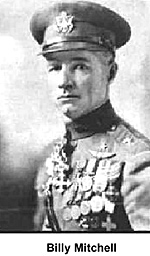 USAF & Douhet
USAF & Douhet
Has the United States Air Force abandoned the Douhet Doctrine? Did it ever subscribe to it? America’s other air force, naval aviation, never did. The Navy’s ballistic missile program is another matter entirely, more in line with Douhet, and mostly in competition with the Navy’s most dangerous foe, the Air Force. Navy and Marine aviation has always focused upon command of the sea and forced amphibious operations in coastal areas. Douhet preached that only three nations needed aircraft carriers: Britain, Japan, and the United States. The first two were island nations who relied upon imports to survive. The vast reaches of the Pacific and Atlantic were too great for land-based independent air forces to control in the distant past. Over the skies of Afghanistan shipboard aviation, when supplemented by Air Force tankers, proved vital. The two Gulf Wars demonstrated the importance of shipboard aviation to Americans deprived of air bases by sovereign nations exercising their rights.
Today’s U. S. Air Force has global reach and the ability to destroy the populated centers of nearly any one nation with ballistic missiles, cruise missiles, manned bombers, and fighter bombers. Only myth stays the nuclear hand—that America is the good guy. Raining atomic devastation on the warring Japanese racist religious fanatics nearly 60 years ago still sullies America’s reputation. The current Iraqi war was criticized for happening too slowly, and is proving that one side won’t stop fighting just because the other side has command of the air. Air power was significant in winning the war, but can only assist in winning the peace. Somehow, “civilian moral” hasn’t proved the significant factor. Then again, Douhet’s theory hasn’t been put to the test. No air campaign has met the criteria set down by Giulio Douhet eight decades ago. Because war is a political activity, it isn’t likely to happen.
Back to Cry Havoc! #43 Table of Contents
Back to Cry Havoc! List of Issues
Back to MagWeb Master Magazine List
© Copyright 2003 by David W. Tschanz.
This article appears in MagWeb.com (Magazine Web) on the Internet World Wide Web. Other articles from military history and related magazines are available at http://www.magweb.com